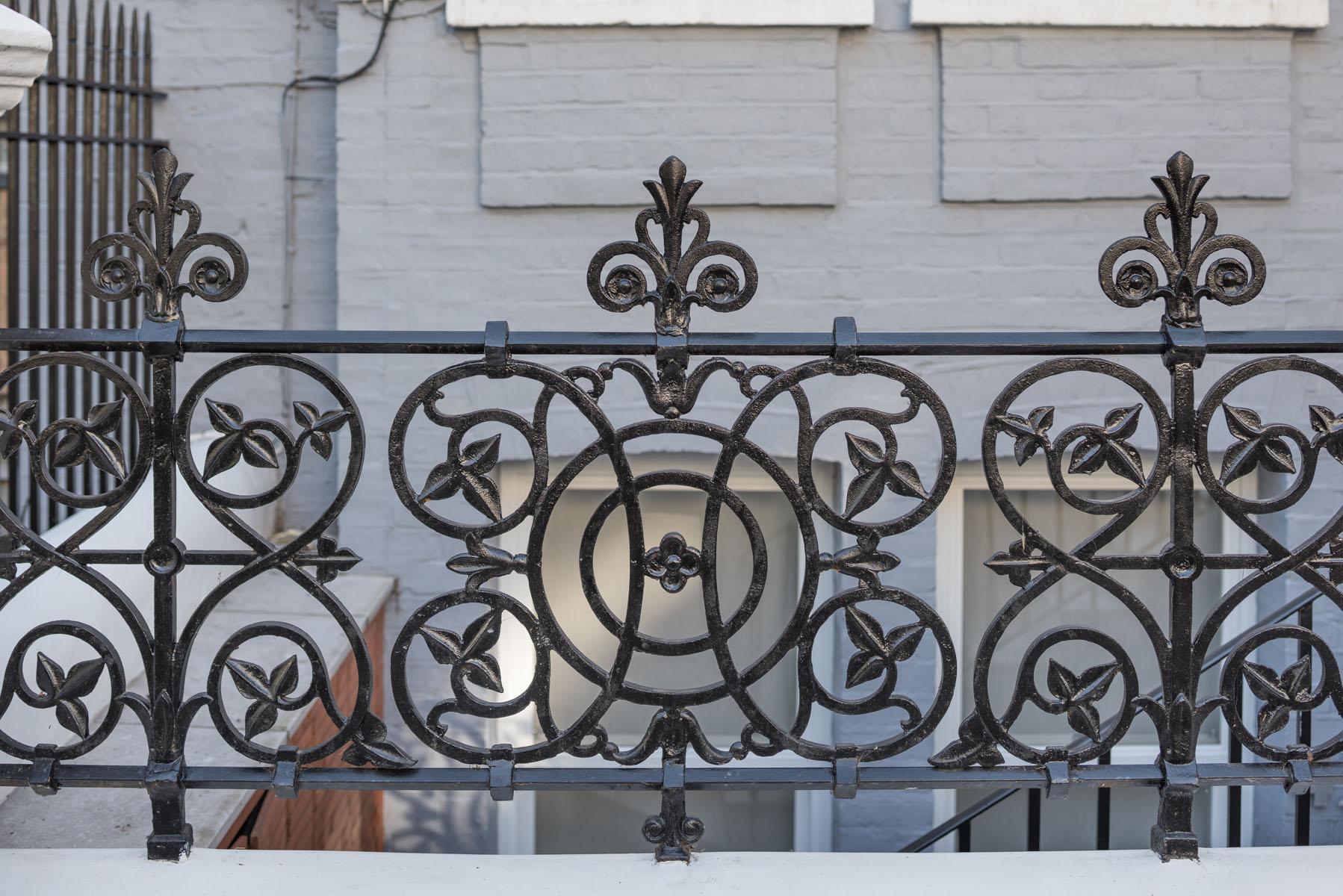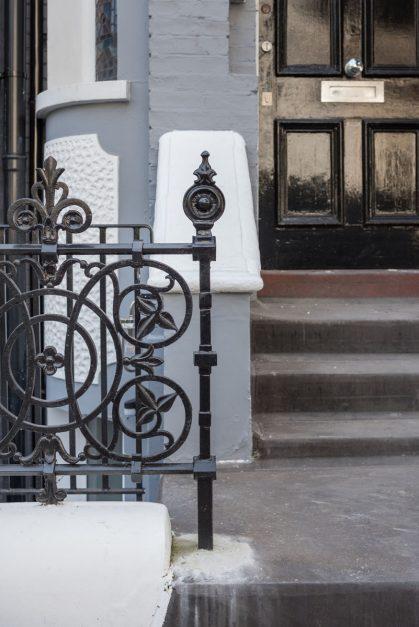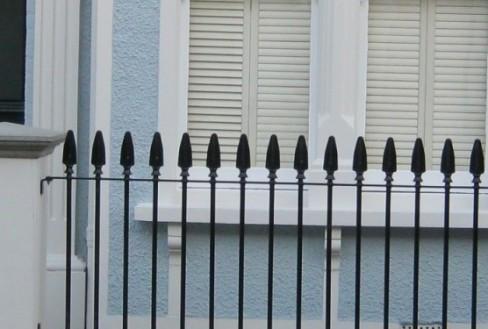
Cast and wrought iron railings may appear to be indestructible, but take it from us, these features can easily fall apart if they’re not cared for properly. Over the years we’ve helped a number of clients restore parts or entire sections of period railings which have fallen into disrepair. With a little care and attention, however, it is usually possible to identify and address these issues quickly and cheaply before they become serious problems.
What are the warning signs?
The biggest threat to the longevity of railings and other external metalwork is rust. This first line of defence for any ironwork is its paintwork so flaking paintwork is a major warning sign which needs to be quickly addressed.
In many cases, however, corrosion can hide beneath the surface of the paintwork so it’s important to take a close look for signs of trouble each spring and autumn, as the snow, ice and cold temperatures over winter are likely to cause the most significant damage to the metalwork. Signs of corrosion beneath paintwork can include:
- Rust staining either directly on the metalwork or on the surfaces surrounding it.
- Cavities or pits in the surface of metalwork
- Oily residue on the paint
- Blistering of the paintwork or expansion of the metalwork
Pay particularly close attention around joints as these are natural failing points and areas which allow dirt to collect and even plants to grow. Also keep an eye out for signs of trouble in the surrounding stonework ether at the side or base of the railings, this can include fissures forming as a result of the metalwork joint expanding.
How to tackle these issues?
At its early stages, corrosion can be relatively easily treated with a standard selection of tools and some metal paint. Carefully clean all areas of the metalwork, removing plants and dirt, then assess it for any of the above warning signs.
If your property is listed or within a conservation area, it may then be necessary to get permission for yourself or a tradesman to carry out the repairs.
For other properties, if you find areas of corrosion, use some wire wool to carefully remove the paintwork and rust in the affected area. Try to keep the removal isolated to the areas affected whilst ensuring all of the corrosion is removed. You can then prime and repaint the areas. There are a variety of paints available but always check the label to ensure it is suitable for your metalwork. In most cases a few thin coats will be more effective than one or two thick coats (ensuring each coat has fully dried before applying the next). Try to avoid blustery days as there will be more chance of dust and debris blowing onto the metalwork as it dries.
What if they need to be replaced?
If the metalwork is severely damaged, then it may be necessary to replace parts of the railing or to remove the entire run and install a new one.
We offer a wide range of cast iron parts within our store, drawing on hundreds of period patterns, which can provide a suitable replacement for many cast iron railing parts including spindles, railing heads and even panels.
Alternatively, if you want to replace a long run then we can create this for you, either using our existing patterns or based on samples or images of the metalwork on the properties surrounding your own. You can read more about how go about this process in a case study on a project down in London.
You can also look at more examples of our work or request a quote via our gallery.











